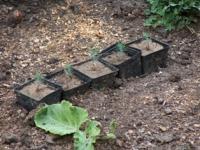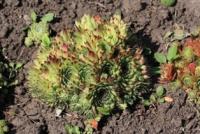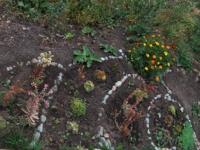You are here
Nursery forest in Baltabay.



Tours tourisme in Kazakhstan.
“The creation of a thousand forests is in one acorn”
Ralph Waldo Emerson.
Excursions on nursery forest in Baltabay.
The greatest collection of world flora in our republic is in an arboretum not far from the town of Issyk. The local air, which is full of healing substances and ions, reminds me of the Garden of Eden.
The green fund of the country has collected more than 1,500 types and hybrids of trees, flowers and bushes from all over the world. For half a century these "foreigners" from the Far East, America, Canada, Europe, China and the Mediterranean have adapted quite well to the local continental climate.
The nursery is rich with names. For people who love the countryside, it has long been known as the Issyk Dendrarium. Scientists prefer to call it by its Latin name an "arboretum," which means a collection of rare trees.
Located in the village of Baltabai, it occupies 378 hectares and is located 53 kilometres to the east of Almaty. It was founded in 1959, through an initiative of Kazakhstan's Academy of Sciences for the purpose of preserving and studying tree and bush forms from the world's fund of plants.
The majority of the plants come from different environmental and climatic zones of the world, with all having approximately the same latitude as our region. Plants are constantly being brought into Kazakhstan to see if they will adapt to desert-steppe zone conditions, which is what most of Kazakhstan is.
Certainly not all exotic plants are able to survive here. Some of them cannot adapt to the local winds and dry climate. Fosterlings of the arboretum are grown for planting and decorating cities, creating forest belts and restoring woods all across the republic.
These are the lungs of the Kazakhstani cities, providing oxygen to millions of people. By the way, the green space in Astana was planted with local trees: blue spruces near the Presidential Palace came from the Issyk nursery, though the types of trees and bushes planted there can be found in any region of Kazakhstan.
The most beautiful time in the arboretum is spring, when many different species of lilac, jasmine, bird cherry and magnolia blossoms all smell sweet. You feel as if you are in a garden of paradise full of magic aromas.
The charming silence of the forest intertwined with the warble of the nightingale carry all your thoughts away. The scientists of Almaty recommended 180 kinds of trees and bush plants for the arboretum. In this region hazel nuts, the evergreen Mexican yucca, Canadian and Karelian spruce trees, junipers, Japanese and Chinese cypresses, horse-chestnut trees and aralia adapt well.
Out of 120 types of birches known to the world, 46 have taken root here. Among them, unusual for our latitude are paper birch, stone birch, Sayanian birch, weeping birch, the villous from Kamchatka and Scandinavia, the Japanese pink tree, black birch, Caucasian birch and Himalayan birch which can grow at an elevation of 4,000 metres.
Other rarities which have taken root here are tulip, cork trees, staghorn sumac trees and the ancient Ussuriysk palm tree, nicknamed the devil's tree for its thorny trunk. One of the tallest trees in the arboretum is the tsuga, which is over 30 metres high. It is a type of Canadian fir tree which in its homeland can live about 1,000 years.
Will it live here in our natural conditions as long as it can in Canada? Future scientists will have to discover this. Currently the arboretum offers children's excursions through preliminary applications, as well as the sale of saplings and consultations on landscaping.
Next to the arboretum there is a nursery of roses where over one hundred varieties of the queen of flowers are grown for creating rose gardens in the cities of Kazakhstan. The collection has roses of almost any color, even blue and black.
Viktor Vladimirovich Gorokhov, the director's assistant for manufacturing and experimental work, shared with us many interesting things about the healing power of arboretum therapy. All plants have energy and can feel our biofield. The thin birch can increase the immune system and intuition of a person.
The chestnut will remove a burden from the heart, the elder will protect one from a hex. If a forehead is placed against the pine, it will take away a headache. The powerful energy of the oak has been known since ancient times: Russian nobility made important decisions in oak groves, carved idols out of oak and worshipped them.
In Ancient Greece, heroes were crowned not only with laurels, but also with oak leaves, known as the tree of Zeus. As if confirming the words of the gardener, weightless dragonflies whirled around in the clear air.
They, as it is known, inhabit only non-polluted environments, like bees, which are also found in abundance here. And we in the meantime admire the unusual leaf structure of the most ancient inhabitant of the planet - gingko biloba.
This symbol of Tokyo at first did not take root in our environment. But fortunately the experiment succeeded, and hopefully in the future Kazakhstanis will be able to experience the widely used medicinal power of its properties.
This tree, which adorned the earth during the Mesozoic Era, is not only beneficial, but also beautiful. Victor Vladimirovich said that the arboretum is a participant in the international project to preserve the unique gene pool of wild orchards in the Zhetysu area.
Scientists all over the whole world are interested in preserving our apple gardens. It is known that our Siversa apple tree is the forebear of all apple trees on the earth. Its gene can be found in each of six thousand cultivations.
A wild-growing Siversa apple tree is used to improve cultivated apple trees as its gene is less susceptible to diseases and gives a great crop without pesticides. The world needs our primary gene pool for the creation of new types of apples; therefore, we are engaged in the reproduction and creation of mother gardens.
The project was started by academician Aimak Jangaliyev, a well known scientist even outside of Kazakhstan. His initiative was supported by the Global Ecological Fund of the United Nations.
The siversa apple tree and an ordinary apricot, which have the same qualities, have been planted in the mother garden of the arboretum. French film producer Katrin Pesh, in cooperation with Jangaliyev, made a documentary about our apple trees called Apples: from the Garden of Eden to GMP.
The second part of the project is devoted to the revival of the legendary Almaty aport apple.
Authorship:
Alzhan Kusainova.
Photos
Alexander Petrov.







